This is a preprint.
Unveiling epigenetic regulatory elements associated with breast cancer development
- PMID: 39605637
- PMCID: PMC11601335
- DOI: 10.1101/2024.11.12.623187
Unveiling epigenetic regulatory elements associated with breast cancer development
Update in
-
Unveiling Epigenetic Regulatory Elements Associated with Breast Cancer Development.Int J Mol Sci. 2025 Jul 8;26(14):6558. doi: 10.3390/ijms26146558. Int J Mol Sci. 2025. PMID: 40724805 Free PMC article.
Abstract
Breast cancer is the most common cancer in women and the 2nd most common cancer worldwide, yearly impacting over 2 million females and causing 650 thousand deaths. It has been widely studied, but its epigenetic variation is not entirely unveiled. We aimed to identify epigenetic mechanisms impacting the expression of breast cancer related genes to detect new potential biomarkers and therapeutic targets. We considered The Cancer Genome Atlas database with over 800 samples and several omics datasets such as mRNA, miRNA, DNA methylation, which we used to select 2701 features that were statistically significant to differ between cancer and control samples using the Monte Carlo Feature Selection and Interdependency Discovery algorithm, from an initial total of 417,486. Their biological impact on cancerogenesis was confirmed using: statistical analysis, natural language processing, linear and machine learning models as well as: transcription factors identification, drugs and 3D chromatin structure analyses. Classification of cancer vs control samples on the selected features returned high classification weighted Accuracy from 0.91 to 0.98 depending on feature-type: mRNA, miRNA, DNA methylation, and classification algorithm. In general, cancer samples showed lower expression of differentially expressed genes and increased β-values of differentially methylated sites. We identified mRNAs whose expression is well explained by miRNA expression and differentially methylated sites β-values. We recognized differentially methylated sites possibly affecting NRF1 and MXI1 transcription factors binding, causing a disturbance in NKAPL and PITX1 expression, respectively. Our 3D models showed more loosely packed chromatin in cancer. This study successfully points out numerous possible regulatory dependencies.
Keywords: MCFS-ID; MXI1; Monte Carlo Feature Selection; NKAPL; NLP; NRF1; PITX1; breast cancer; chromatin structure; differentially methylated sites; epigenetic regulation; transcription factor.
Figures



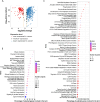
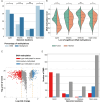


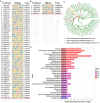
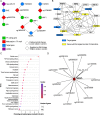
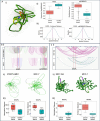
Similar articles
-
Unveiling Epigenetic Regulatory Elements Associated with Breast Cancer Development.Int J Mol Sci. 2025 Jul 8;26(14):6558. doi: 10.3390/ijms26146558. Int J Mol Sci. 2025. PMID: 40724805 Free PMC article.
-
Cost-effectiveness of using prognostic information to select women with breast cancer for adjuvant systemic therapy.Health Technol Assess. 2006 Sep;10(34):iii-iv, ix-xi, 1-204. doi: 10.3310/hta10340. Health Technol Assess. 2006. PMID: 16959170
-
Signs and symptoms to determine if a patient presenting in primary care or hospital outpatient settings has COVID-19.Cochrane Database Syst Rev. 2022 May 20;5(5):CD013665. doi: 10.1002/14651858.CD013665.pub3. Cochrane Database Syst Rev. 2022. PMID: 35593186 Free PMC article.
-
Systemic pharmacological treatments for chronic plaque psoriasis: a network meta-analysis.Cochrane Database Syst Rev. 2021 Apr 19;4(4):CD011535. doi: 10.1002/14651858.CD011535.pub4. Cochrane Database Syst Rev. 2021. Update in: Cochrane Database Syst Rev. 2022 May 23;5:CD011535. doi: 10.1002/14651858.CD011535.pub5. PMID: 33871055 Free PMC article. Updated.
-
Comparison of Two Modern Survival Prediction Tools, SORG-MLA and METSSS, in Patients With Symptomatic Long-bone Metastases Who Underwent Local Treatment With Surgery Followed by Radiotherapy and With Radiotherapy Alone.Clin Orthop Relat Res. 2024 Dec 1;482(12):2193-2208. doi: 10.1097/CORR.0000000000003185. Epub 2024 Jul 23. Clin Orthop Relat Res. 2024. PMID: 39051924
References
-
- Bean GR, Lin CY. Breast neuroendocrine neoplasms: practical applications and continuing challenges in the era of the 5th edition of the WHO classification of breast tumours. Diagnostic Histopathology. 2021. Jan;27(4):139–47. 10.1016/j.mpdhp.2021.01.001 - DOI
Publication types
Grants and funding
LinkOut - more resources
Full Text Sources
